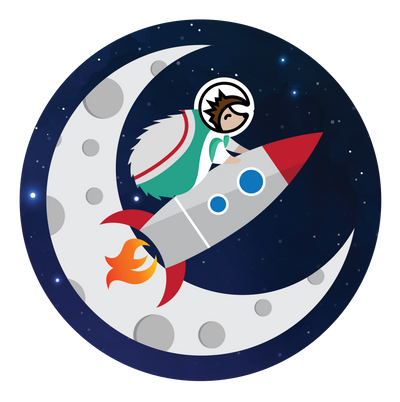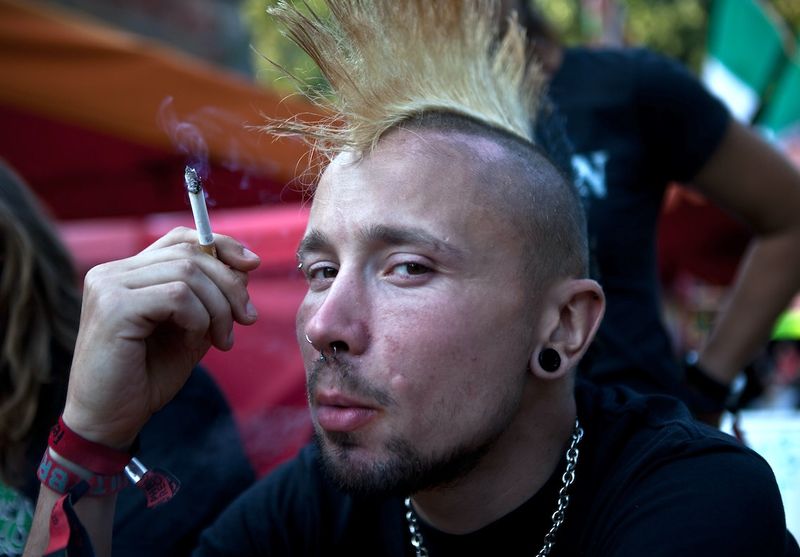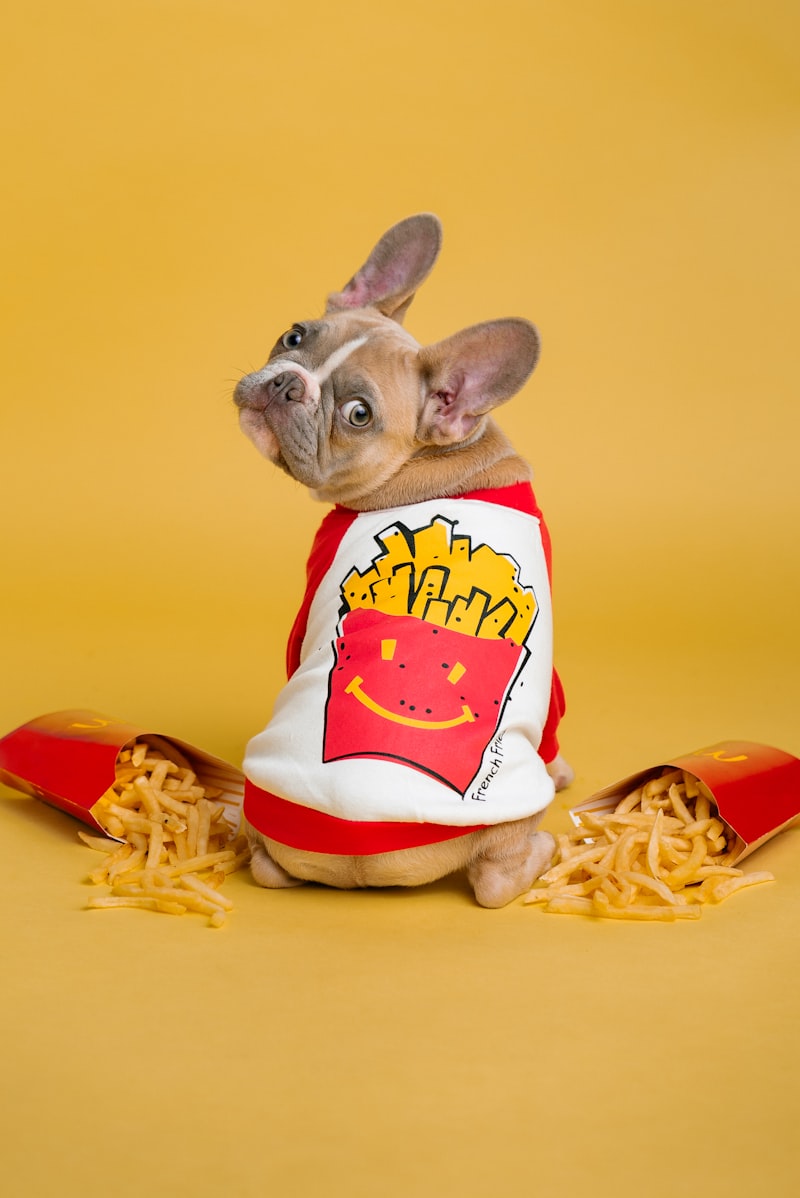HOKK Finance was created like many other meme coins. A group of anon shitposters gathering on Discord, Telegram, and other online spaces to meme. For a long time, the project was run by ignorant volunteers who didn't really know their vision, aims, or goals.
Despite a lack of direction, the project mooned and reached a market cap of $830 million. How do you even do that? We still don't really know who these original creators were behind their mask of anonymity but we can assume they were fairly regular dudes. And, like most regular dudes, they were completely lost on what to do in this scenario.
The project was in disarray. There was no leadership and the team was like a revolving door. HOKK Finance needed someone to take the project by the collar and walk it in a better direction.
A new beginning for HOKK
That was when Mark Basa joined the project as the Director of HOKK Finance.
"During meme season, I sat back and realized that young people all across the world are taking their money out of banks where their money is safe, and betting on a new horse — which is the meme." Mark Basa told me on why he wanted to join the memecoin space, "if you're able to build an ecosystem that facilitates young people's need for memes and community while giving them a cool sexy currency to use — holy shit you'll win this race."
And that’s when he started reaching out to meme projects to offer his services. HOKK replied and like one thing leads to another, he was promoted to the director in a short time. His vision for HOKK was crystal clear. "The goal was a meme-powered DeFi ecosystem", he said.
Building a team
The first thing he did as a newly anointed director was to hire a good PR agent to show off what the project was doing. Previously, the team had no way of effectively communicating the progress they were making.
Next, he doxxed himself. Many investors in the space know the risk of putting your money into a project with a completely anon team — rug pulls. Mark wanted to remove this doubt from investors' minds. So, he became the face of the project. His photo was on "Our Team" section on their site, for a long time as the only doxxed person on the team.
"Most people were working on a volunteer basis. They all worked together but no one knew who each other really were on the other end." He said, "I wanted to bring in some people with grey hair — the OG blockchain guys. For example, our Head of Dev Ops built some of the first nodes on Ethereum."
One of the other experienced heads Mark brought in was Lawrence Hutson. As a computer scientist and economist, crypto came as second nature to him when he discovered it in 2018. Before that he'd worked on big projects on both Web 1 and Web 2. Notably, creating the first travel site, Travelocity, which was sold to Expedia for $280 million. As well as, in one of the most random claims to fame, creating the username@domain template for emails.
How are memecoin operations different from other projects?
Lawrence says, "In Web 1, you [usually take] years to complete a project. Now in Web 3, we no longer talk in terms of months but days. I think the main accelerator is [most projects being] open-source. When creating something, I can comb through someone else's smart contracts to find what I need and it's already been tried and tested."
Another reason is the community that surrounds these projects. Back in Web 1, you'd create a project, release it to the public and you could pretty much leave it alone. But in Web3, you've got to nurture an entire community, keep them engaged, make them believe YOUR project is the one they choose.
You're probably surprised we've gotten this far without talking about managing the community, and so am I. Apart from the community, the amount of development around creating utility for this memecoin surprised me. HOKK has launched NFTs, yield farming, a wallet, a launchpad, and more. They're even planning to launch a loan scheme as well as a HOKK school & university (???).
It's an ambitious memecoin project but the community is still at the core of its daily operations.
Community mods
One thing HOKK did right was to source their staff from their own community. Their social media manager, Mike Howard had an affinity for bouncing from one memecoin to another. But when he found HOKK, Mike realized that he loved answering questions from the community. This got him noticed and he was offered a position as a mod. And now he has jumped up the ranks to become a social media manager.
He told me, "I get involved with everything. I help write whitepapers, video editing, visuals for social media, you name it — I’ll have some contribution."
Since joining the community, he's become unfathomably dedicated to supporting the group. After his regular 9-5 job, he picks up his kids and then has dinner with his family before logging onto Telegram to start his second job as a mod and Social Media Manager at HOKK.
To help bring the community closer together, Mike hosts weekly pub quizzes every Friday. He pulls the questions together, hosts the event, and gives out prizes (which can be up to $200).
Like every other crypto project mod, he has his hands full. Not just with community management, but shutting down the shill wars. No idea what that is? Read on.
The shill wars
Communities in many blockchain spaces sometimes become extremely tribal — especially if it’s a memecoin. On one hand, you have a group of people dedicated to promoting your token that'll support you till death. However, you also have other projects committed to putting your memecoin down while pushing their token onto you. Creating a shill war.
From time to time, HOKK’s Telegram chat will get flooded with people from other memecoins. Spamming the chat with FUD and promoting their favorite meme. Mods like Mike have to be quick on their toes to mute or ban these people. Not only because FUD is obviously bad but they're littering the HOKK town square, ruining the community home.
The question at this point is — do you hit back? Many projects do, sending their army over to Telegram to flood their rival's chat. But HOKK is above that.
"For us, if one succeeds we all succeed. We don't jump on other people's shills. We don't talk down on other projects. Unfortunately, other projects don't really have ethics like that." said Mike, "we get it a lot on Twitter too. Once I post a tweet, I have to monitor it for 5 to 10 minutes to remove all the shillers and FUD in the replies."
CoinMarketCap’s comment section is one of those toxic places. On the right, you have a bullish and bearish button with a chat feature. There you’ll have people spreading false information. They are usually from other projects or people who have a personal vendetta against the team. To combat it, the mods have to organize the community to go to the website and leave positive comments instead.
Shill wars feel like a day at horse racing. Everyone places their bets and gets ready for the race to begin. A gunshot fires, the race starts. All the betters start shouting at their horse. "COME ON FLOKI INU YOU CAN DO IT", "HOKK YOU'VE GOT THIS YOU'RE GONNA WIN". It feels like whoever is going to shout the loudest will win the race. The only difference is that shouting about your memecoin actually works while shouting at horses doesn't.
Community members take it upon themselves to promote their token. One HOKK member took it to the next level while on holiday in Dubai. I'm sure he told every waiter, porter, and cleaner about HOKK but he also skydived wearing a HOKK t-shirt, as well as hiring a Lambo covered in HOKK stuff.
Wen Lambo? 👀 https://t.co/D9JGykDA8Z
— HOKK Finance | hokk.finance (@HOKKFinance) May 20, 2022
Running a memecoin is hard work
Clearly, there is a lot to do when running a memecoin. HOKK is uniquely positioned by the fact they are trying to offer unrivaled utility, meaning there is a lot of development that non-meme projects also tackle.
Hiring staff, convincing your team to doxx themselves, developing products, and, of course, nurturing your community. Memecoins are a lot of god damn work!
HOKK investors aren't all brain-dead retail millionaire chasers — although I'm sure some are. You have industry professionals, blockchain innovators, and everything in between. This can create issues as you have the ape "wen moon" folk mixing with more calculated pros, and you have to please both. But when combined, they create a powerful force that will shill and evolve your project more than either could do on their own.
Check out writer Ryan S. Gladwin's website, follow him on Twitter, and of course, subscribe to the weekly Hedgehog newsletter!






